Powerful conservation tech tools are gathering more data in the field than ever before. But without equally powerful and effective data management and processing tools, that data - no matter how groundbreaking or interesting - will not be able to reach its full potential for impact.
Data management can sometimes seem intimidating to conservationists, especially those just getting started in the world of conservation tech or experimenting with new data collection methods. While every community member's workflow and preferred data management and processing methods may be different, this group can serve as a resource to explore what works for others, share your own advice, and develop new strategies together.
Below are a few WILDLABS events dealing with datasets collected from various conservation tech tools:
Nicole Flores: How do I get started with Wildlife Insights?
Jamie Macaulay: How do I analyse large acoustic datasets using PAMGuard?
Sarah Davidson: Tools for Bio-logging Data in Conservation
Whatever conservation tech tools you work with, and whatever your preferred data management methods, we hope you'll find something helpful and effective in this group when you become a member!
No showcases have been added to this group yet.
- 0 Resources
- 0 Discussions
- 6 Groups
Fauna & Flora
Remote Sensing Scientist, Conservation Technology & Nature Markets @ Fauna & Flora - WILDLABS Geospatial Group Co-Lead



- 42 Resources
- 49 Discussions
- 9 Groups
- @tcsmith
- | he/him
I am a conservation biologist interested in modeling social-ecological systems.
- 0 Resources
- 0 Discussions
- 11 Groups
- @Aurel
- | She/Her
Looking to reconcile biodiversity conservation and finance.


- 2 Resources
- 1 Discussions
- 10 Groups
- @Lysa001
- | she/her
Conservation Biologist
- 0 Resources
- 0 Discussions
- 15 Groups
- @LucyD
- | She/Her
Software developer and wildlife ecologist


- 0 Resources
- 2 Discussions
- 5 Groups
- @sarapruckner
- | she/her
Lead Spatial Data Scientist at the International Institute of Applied Systems Analysis
- 0 Resources
- 0 Discussions
- 1 Groups
Smithsonian Institution
- 0 Resources
- 0 Discussions
- 13 Groups
- 0 Resources
- 0 Discussions
- 7 Groups
- @mwanikimm
- | Mr
Ol Pejeta Conservancy
Technology and Innovations Manager
- 0 Resources
- 0 Discussions
- 7 Groups
- @Nate
- | He/Him
I support the technology for over 200 of the state's top scientists in the Office of Resource Conservation at IDNR and the Illinois Nature Preserves Commission.

- 0 Resources
- 2 Discussions
- 4 Groups
MSc student in wildlife management and conservation

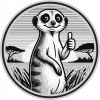
- 0 Resources
- 2 Discussions
- 12 Groups
Careers
The SMART Partnership is hiring a Program Director to oversee all aspects of the partnership's operations
21 February 2024
We invite applications for the third Computer Vision for Ecology (CV4E) workshop, a three-week hands-on intensive course in CV targeted at graduate students, postdocs, early faculty, and junior researchers in Ecology...
12 February 2024
The primary focus of the research is to explore how red deer movements, space use, habitat selection and foraging behaviour change during the wolf recolonization process.
10 February 2024
Funding
With $60,000, $30,000, and $10,000 grants available for 14 outstanding projects, the support of engineering and technology talent from Arm (the leading semiconductor design company), and access to the world’s biggest...
1 December 2023
TagRanger® is a state-of-the-art wildlife finding, monitoring and tracking solution for research, conservation and environmental professionals. With superior configurability for logging data, reporting location and...
23 November 2023
A secure platform designed for those working to monitor & protect natural resources. Insight facilitates sharing experience, knowledge & tools to increase efficiency & effectiveness in conservation. By...
7 November 2023
handling one-value-per-line formats for burst and continuous data
27 October 2023
With the rising threats to biodiversity such as wildlife crime, climate change and human-wildlife conflict today, wildlife monitoring technologies have become vital to study movement ecology, behaviour patterns, changes...
25 October 2023
Have you created a successful career in tech and are ready to do something good with your skills and experience? If yes, then join Open Earth's Earthshot mission to build open source digital systems and solutions to...
25 October 2023
Careers
The Institute of Zoology (IoZ), the research division of the Zoological Society of London (ZSL), is seeking to fill three new permanent positions by recruiting outstanding early-career researchers as Research Fellows (...
20 October 2023
Enrollment for Luke Negoita's Basics of R (for ecologists) course is opening in a few days, but this will be the LAST TIME (for a while) that he'll be admitting new students into the course. If you've needed to learn R...
20 October 2023
Listen in on our interview with Mara Elephant Project’s Tracking Manager, Wilson Sairowua, as he explains how MEP is using software, geofencing and drone technologies to resolve human-elephant conflict across Maasai...
20 October 2023
August 2025
October 2025
event
event
November 2025
event
June 2025
event
event
event
87 Products
Recently updated products
| Description | Activity | Replies | Groups | Updated |
|---|---|---|---|---|
| Hi @CourtneyShuert We support NOAA with AI for individual ID for belugas (but from aerial and from lateral surface too). If some of our techniques can be cross-applied... |
|
AI for Conservation, Data management and processing tools | 6 days 18 hours ago | |
| Hello Eugene, I just tried your service:Was wondering how possible will it be to have the option to upload a second image and have a comparison running to let the user know if... |
|
AI for Conservation, Camera Traps, Data management and processing tools, Software Development | 1 week ago | |
| You could just throw out that data, but I think you'd be doing yourself a disservice and missing out on some interesting insights. Are you training the AI with just pre-COVID... |
|
AI for Conservation, Animal Movement, Data management and processing tools, Human-Wildlife Coexistence | 1 week 6 days ago | |
| Do you thinks an AI could do that ?GitHub - naturalsolutions/ecoSecrets: ecoSecrets is a web application which enables users to manage their camera traps data |
|
Data management and processing tools | 2 weeks ago | |
| Wondering if anyone here has come across good guidance/frameworks/best practices/etc. for baseline conservation data management (beyond... |
|
Data management and processing tools, Protected Area Management Tools | 2 weeks ago | |
| Wow this is amazing! This is how we integrate Biology and Information Technology. |
|
Camera Traps, AI for Conservation, Build Your Own Data Logger Community, Data management and processing tools, Marine Conservation, Protected Area Management Tools, Geospatial | 2 weeks 4 days ago | |
| Here is a nice review on the use of camera traps in various ecological contexts:https://onlinelibrary.wiley.com/doi/toc/10.1002/(ISSN)2045-7758.ecological-insights |
+10
|
Camera Traps, Data management and processing tools | 1 month 1 week ago | |
| 15 years ago I had to rebuild the dams on a game reserve I was managing due to flood damage and neglect. How I wished there was an easier,... |
|
Drones, Conservation Tech Training and Education, Data management and processing tools, Emerging Tech, Geospatial, Open Source Solutions | 4 months ago | |
| Thanks Fadhilla! I met with your colleague Henrick at the booth. :-) |
|
AI for Conservation, Animal Movement, Camera Traps, Citizen Science, Community Base, Data management and processing tools, Early Career, Geospatial | 1 month 3 weeks ago | |
| Hi Jeremy,I am copying here a reply from Juliane Röder, who is not on the forum here: The GFBio VAT tool seems to do all the desired analysing and visualising stuff - but it... |
+32
|
Data management and processing tools, Camera Traps, Software Development | 2 months ago | |
| I'm excited to see this project begin; I think its focus on versatility and functionality for users in diverse environments will allow Trapper Keeper to have a broad impact,... |
|
Camera Traps, Data management and processing tools, Emerging Tech, Open Source Solutions, Software Development | 2 months 1 week ago | |
| HiThis is great! So just to double check - there is no way to join online? I would love to be part of this conference. Thanks, Els van Lavieren |
|
Community Base, Conservation Tech Training and Education, Data management and processing tools, Emerging Tech, Human-Wildlife Coexistence, Protected Area Management Tools, Wildlife Crime | 2 months 2 weeks ago |
AniMove Summer School 2025Application deadline: 31.May 2025
21 May 2025 1:08pm
Governance in Action: How Practitioners Use ElinorData.org to Drive Conservation Results
19 May 2025 6:57pm
The Boring Fund 2024 - MoveApps
17 January 2025 12:54pm
2 April 2025 12:15pm
We are pleased to inform you that we have now finalized point 2 and 3. Here some details of the update:
- App browser improvements:
- Improved overview and search: we have added a description of each category and
the search and filtering options are improved. Searching for Apps within a Workflow: we have added the option to include Apps
that are not compatible with the IO type, making it easier to decide if a translator
App is needed to include one of the incompatible Apps.
- Improved overview and search: we have added a description of each category and
- Public Workflows improvements:
- Improved overview: the public Workflows are now organized by categories which
can be also used for filtering. - More information: the details overview contains now the list of Apps included in
each Workflow. - Sharing Workflows: when creating a public Workflow you will have to select one
or more existing categories, but you can also always request a new category.
- Improved overview: the public Workflows are now organized by categories which
Go and check it out in MoveApps!
4 April 2025 2:53pm
That's so great, thanks for the update!
16 May 2025 12:20pm
We are please to inform that we have implemented the point 1 and 4 and with this have finalized the project. The latest improvements:
- Improvement in findability of help documentation: we have started to populate the platform with links (question mark icon) to the relevant
sections of the user manual. - The log files of each App can now be downloaded and when an error occurs directly be sent to MoveApps support. Find more details here.
Again a great thank you for giving us the opportunity to implement these changes. We think they have greatly improved the user friendliness of MoveApps
HawkEars: a high-performance bird sound classifier for Canada
13 May 2025 11:00am
Survey on Earth Observation in Wildlife Ecology
8 May 2025 12:42pm
Prospective NSF INTERN
11 February 2025 10:00am
8 May 2025 8:51am
My name is Frank Short and I am a PhD Candidate at Boston University in Biological Anthropology. I am currently doing fieldwork in Indonesia using machine-learning powered passive acoustic monitoring focusing on wild Bornean orangutans (and other primates). I am reaching out because as a student with a National Science Foundation Graduate Research Fellowship, I am eligible to take advantage of the NSF INTERN program which supports students to engage in non-academic internships through covering a stipend and other expenses, with the only caveat being that the internship must be in-person and not remote. I was wondering if any organizations in conservation technology would be interested in a full-time intern that would be coming in with their own funding?
In addition to experience with machine learning and acoustics through training a convolutional neural network for my research, I also have worked with GIS, remote sensing, and animal movement data through other projects. Further, I have experience in community outreach both in and outside of academic settings, as I previously worked for the Essex County Department of Parks and Recreation in New Jersey for 3 years where I created interpretive signs, exhibits, newsletters, brochures, and social media posts. Now while doing my fieldwork in Indonesia, I have led hands-on trainings in passive acoustic monitoring placement and analysis as well as given talks and presentations at local high schools and universities.
I would love to be able to use this opportunity (while the funding still exists, which is uncertain moving forward due to the current political climate in the US) to exercise and develop my skills at a non-academic institution in the conservation technology sphere! If anyone has any suggestions or is part of an organization that would be interested in having me as an intern, please contact me here or via my email: fshort@bu.edu geometry dash. Thank you!
Hi Frank, your work sounds incredibly valuable and well-aligned with current needs in conservation tech. With your strong background in machine learning, acoustics, GIS, and outreach, you’d be an asset to many organizations. I’d recommend looking into groups like Rainforest Connection, Wildlife Acoustics, or the Conservation Tech Directory (by WILDLABS)—they often work on acoustic monitoring and might be open to in-person internships, especially with funding already in place. Best of luck finding the right match—your initiative is impressive!
CMS Survey on Ecological Connectivity and Infrastructure
30 April 2025 10:03pm
Connecting the Dots: Integrating Animal Movement Data into Global Conservation Frameworks
 Lacey Hughey
and 3 more
Lacey Hughey
and 3 more
30 April 2025 1:38am
No-code custom AI for camera trap images!
25 April 2025 8:33pm
28 April 2025 7:03am
When you process videos, do you not first break them down into a sequence of images and then process the images ? I'm confused as to the distinction between the processing videos versus images here.
28 April 2025 3:57pm
We do, but the way the models handle the images differs depending on whether they're coming from videos or static images. A quick example: videos provide movement information, which can a way of distinguishing between species. We use an implementation of SlowFast for one of our video models that attempts to extract temporal information at different frequencies. If the model has some concept of "these images are time sequenced" it can extract that movement information, whereas if it's a straight image model, that concept doesn't have a place to live. But a straight image model can use more of its capacity for learning e.g. fur patterns, so it can perform better on single images. We did some experimentation along these lines and did find that models trained specifically for images outperformed video models run on single images.
Hope that helps clear up the confusion. Happy to go on and on (and on)...
28 April 2025 5:58pm
Interesting. Thanks for the explanation. Nice to hear your passion showing through.
Overview of Image Analysis and Visualization from Camera traps
28 April 2025 8:09am
Project Update — Nestling Growth App
22 April 2025 10:45pm
The boring fund: Standardizing Passive Acoustic Monitoring (PAM) data - Safe & sound
27 January 2025 3:47pm
8 February 2025 11:00pm
This is such an important project! I can't wait to hear about the results.
12 February 2025 4:15pm
Hey Sanne, awesome - we definitely need a consistent metadata standard for PAM.
If you haven't already, I would suggest sharing this on the Conservation Bioacoustics Slack channel and the AI for Conservation Slack channel. You would reach a lot of active users of PAM, including some folks who have worked on similar metadata efforts.
If you're not a member of either one of those, DM me your preferred email address and I'll send you an invite!
7 April 2025 11:07pm
Hello everyone,
Thank you all for your contribution!
You can read some updates about this project in this post.
Julia
Free Webinar by Nature FIRST: Bridging Ecology and ESG – Smarter Decisions with Knowledge Graphs
2 April 2025 10:59am
Nature Tech for Biodiversity Sector Map launched!
1 April 2025 1:41pm
4 April 2025 1:57pm
Multiple grants
28 March 2025 1:42pm
SCGIS International Conference: Geospatial Technology Innovations for Conservation
27 March 2025 6:35pm
Nature Tech Unconference - Anyone attending?
8 March 2025 12:11pm
15 March 2025 8:28am
Definitely!
21 March 2025 12:07pm
The Futures Wild team will be there :)
26 March 2025 7:54pm
Yep see you on friday
Generative AI for simulating landscapes before and after restoration activities
26 March 2025 1:59pm
26 March 2025 7:50pm
Yep we are working on it
🌿 Quand la Technologie Devient L'alliée du Paysagiste 🌍 | Olivier Rovellotti 🌍 | 11 comments
🌿 Quand la Technologie Devient L
1/ segment
2/remote unwanted ecosytem
3/get local potential habitat
4/generate
5/add to picture
United Nations Open Source Principles
13 March 2025 4:13pm
25 March 2025 11:54am
All sound, would be nice if there were only 5, though!
Modern GIS: Moving from Desktop to Cloud
12 March 2025 7:10pm
Standard Threshold for "Habitat Use" in Avians?
7 March 2025 9:05pm
9 March 2025 7:47am
Is that not a statistical question and depending in the classification performance of the SW (Birdnet), which itself may depend on the species and the variability of the call?
I, myself, have no practical experience with Birdnet, but use a commercial product that derives from Birdnet and found in about 1000 days, for example, the following tail statistics (22 x 1), (12 x 2), (6 x 3), (5 x 4) bird detections. In total, 223 different species were classified, with black birds being on top with 149000 detections. Overall, there seems to be a nearly exponential decay of different bird detections, which to me shows a problem with NN-based classifications, as there seems to be no clean separation between 'signal' and 'noise', as one can find in traditional signal processing.
From these statistics (histogram) I would conclude that in the end there is no meaningful threshold, as there is no meaningful 'misclassification floor' that could be used to define a threshold.
Consequently, you may have to consider context, inspect every suspect snippet and let human decide.
11 March 2025 2:44pm
Hey Cortney, this is such a good question!
First off - I'd be very careful about interpreting the number of BirdNET detections of a species as a vocalization index for that species. For example, let's say a recorder captures a lot of Species A, which sounds like Species B, but Species B isn't present at that site. You will often find that BirdNET (or any other sound ID model) reports many detections for Species B and Species A, making it seem like both species are present. So, the number of detections of a species at a site isn't necessarily a more reliable indicator of species presence at that site.
One alternative to consider would be to verify species presence at each site and each day, then use the number of days that species was present as a threshold for habitat use. What threshold to use depends on the species - we've used three consecutive days of presence for some songbirds, for instance.
You could also remove dates when the species is expected solely to be migratory. However, this can get tricky... For example, I've observed that Cerulean Warblers that breed at a particular site will arrive there a week or two before migrants pass through at nearby non-breeding migration hotspots.
Doing a day-by-day analysis of presence enables you to more easily check machine learning detections than if you were checking for the number of detections for each species. You can verify the presence of the species at each site and day by listening to the highest-scoring clips for each day for each species.
If you have 18 days of recording * 12 sites and you listen to the top 5 highest-scoring clips per species and day, that's a maximum of 1,000 five-second clips per species. In my experience, reviewing that amount of clips takes me only a few hours using a Jupyter notebook like this one:
bioacoustics-cookbook/tdl-notebook at main · kitzeslab/bioacoustics-cookbook · GitHub
Jupyter Notebooks for interactive review and annotation of audio files - bioacoustics-cookbook/tdl-notebook at main · kitzeslab/bioacoustics-cookbook
12 March 2025 5:43pm
Thank you so much! This is super helpful and I really appreciate the feedback!
Nature FIRST Conference: Innovation and Collaboration in Conservation
11 March 2025 9:39am
Do more with Data: Online Workshop
11 March 2025 9:12am
Sea turtle Bioacoustics Project
17 February 2025 8:16pm
7 March 2025 12:47pm
Hi Sam, I did my master's on hatchling turtle vocalisations and their role in nest emergence behaviours (currently under review for publication). I recorded nest emergence behaviour in-situ using microphones and camera traps. I worked with snapping turtles, but the methods could be quite useful. I would be happy to share my thesis if that would be helpful.
there are a few sea turtle papers that describe hatchling vocalisations but not many experiments testing hypotheses for these vocalisations.
here are some papers that could help you get you started:
Shoot me a message if interested in chatting more :)
7 March 2025 1:32pm
Hello Sam ...great work, would like to see the paper when it comes online. I would like to know about the device....Bests Zahir
10 March 2025 11:24am
That's amazing thanks so much!
Advancing Hierarchical Classification of Ocean Life
4 March 2025 10:09pm
4 March 2025 10:13pm
The 100KB Challenge!
7 February 2025 11:47am
20 February 2025 9:13am
Nice one - what kind of thing would you use this for?
~500mA peak current, it has a similar power profile as the current RockBLOCK product, in that it needs lots of juice for a for a small period of time (to undertake the transmission) we include onboard circuitry to help smooth this over. I'll be able to share more details on this once the product is officially launched!
20 February 2025 9:13am
~500mA peak current, it has a similar power profile as the current RockBLOCK product, in that it needs lots of juice for a for a small period of time (to undertake the transmission) we include onboard circuitry to help smooth this over. I'll be able to share more details on this once the product is officially launched!
20 February 2025 9:31am
Hi Dan,
Not right now but I can envision many uses. A key problem in RS is data streams for validation and training of ML models, its really not yet a solved problem. Any kind of system that is about deploying and "forgetting" as it collects data and streams it is a good opportunity.
If you want we can have a talk so you tell me about what you developed and I'll see if it fits future projects.
All the best
INTERNSHIP FOR COMPUTER VISION BASED INSECT DETECTION AND CLASSIFICATION
25 February 2025 10:46am






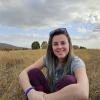















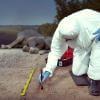

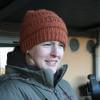
















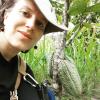







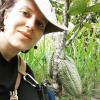

















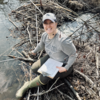




27 May 2025 10:20am